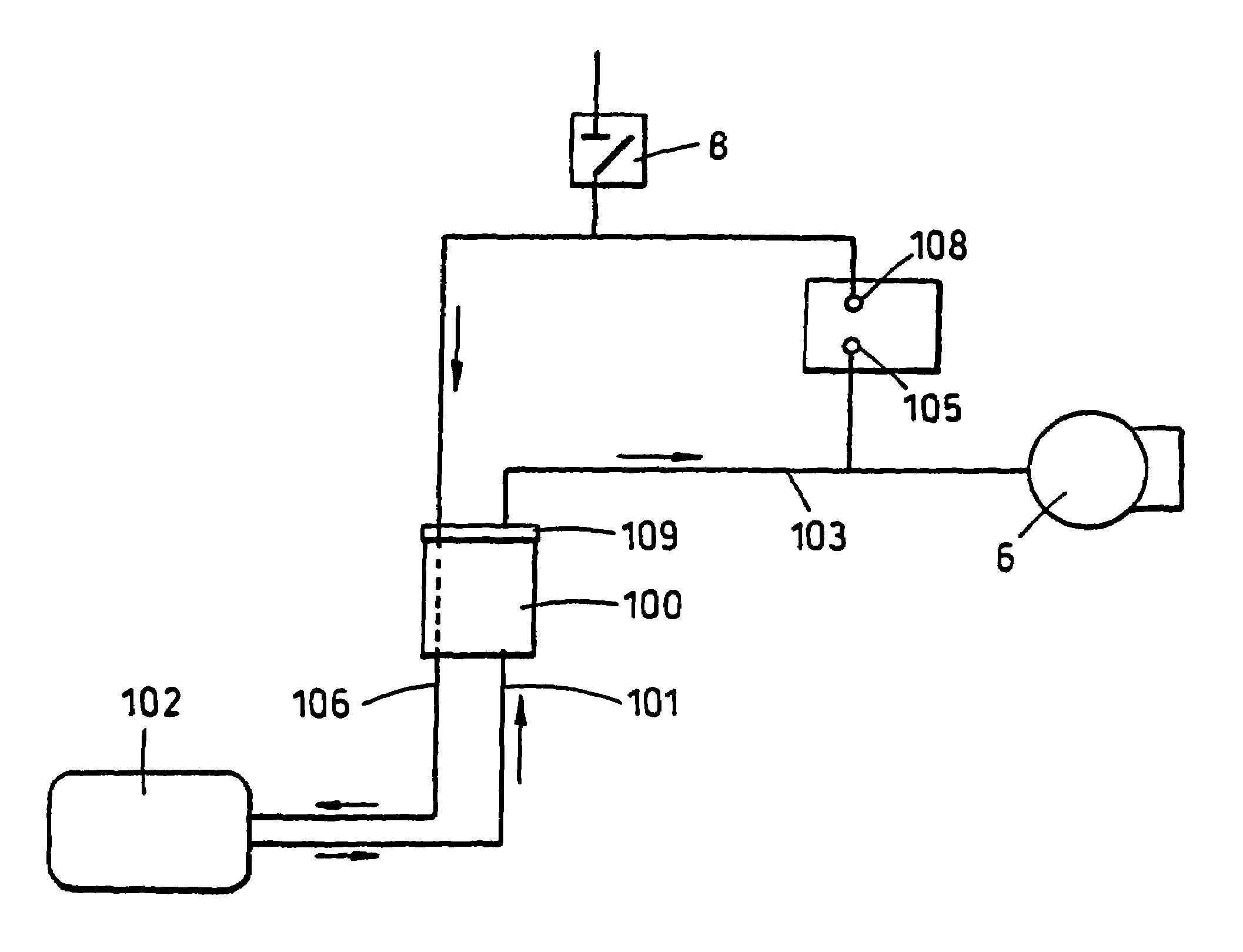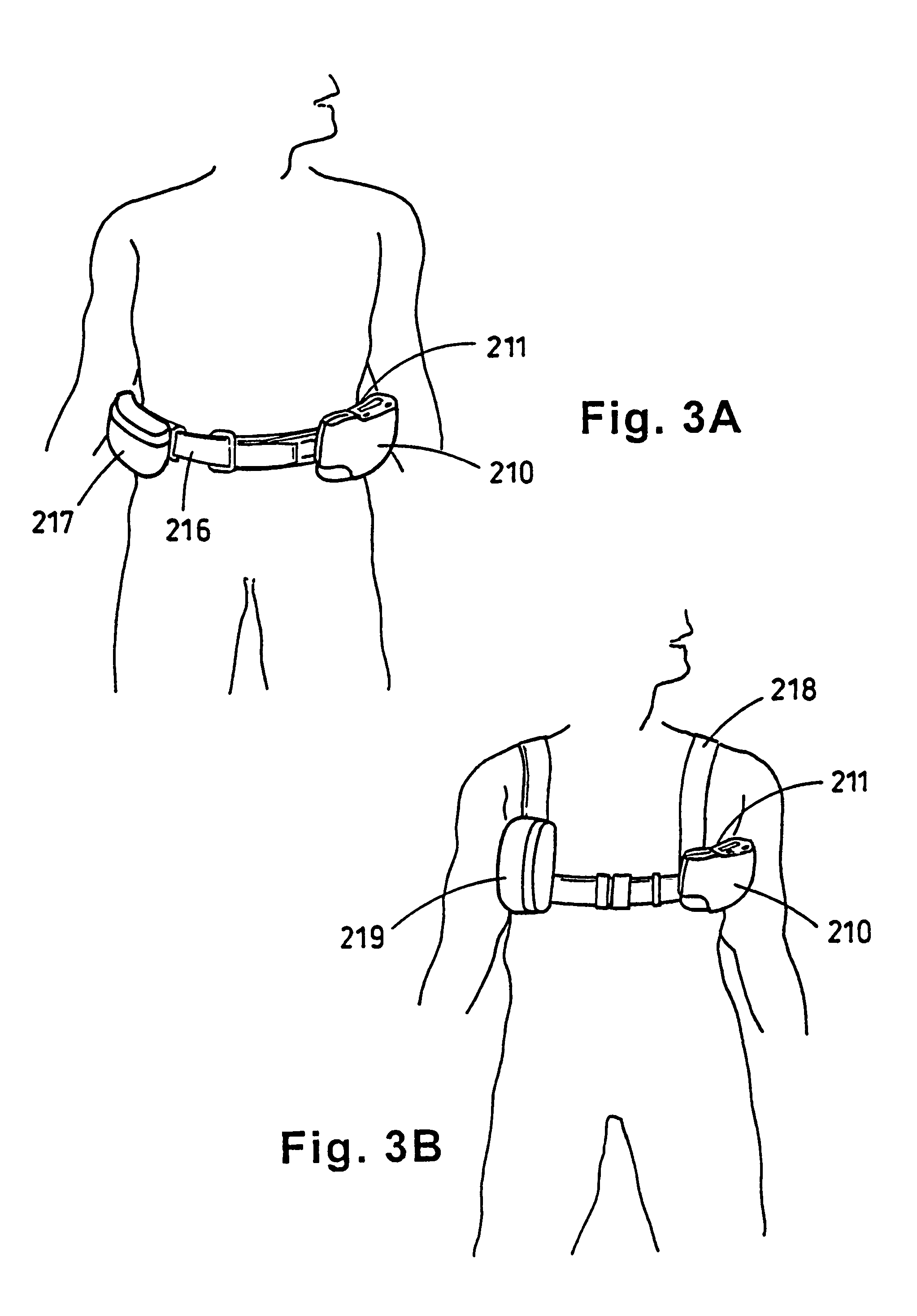Portable wound treatment apparatus
a wound treatment and portable technology, applied in the field of wound healing, can solve the problems of less easy to determine the pressure prevailing at the wound site being treated, and achieve the effects of easy removal and replacement, less easy to determine the pressure prevailing, and increased speed
- Summary
- Abstract
- Description
- Claims
- Application Information
AI Technical Summary
Benefits of technology
Problems solved by technology
Method used
Image
Examples
Embodiment Construction
[0021]Although those of ordinary skill in the art will readily recognize many alternative embodiments, especially in light of the illustrations provided herein, this detailed description is exemplary of the preferred embodiment of the present invention, the scope of which is limited only by the claims appended hereto.
[0022]Referring to the drawings, the portable therapeutic apparatus comprises a housing 210 (best shown in FIGS. 2A and 2B), having rounded corners and a side 211 which is concavely curved in order to fit comfortably to the wearer's body. The shaping of the housing with curved surfaces is to avoid sharp corners or edges that could dig in to the user or his caregiver. The upper surface 212 is generally flat and has an LCD screen 213 on which details such as applied pressure can be displayed. Control buttons 214 are provided to adjust pressures and treatment intervals. Provision is made for housing a canister within the housing and a snap release cover 215 is arranged for...
PUM
 Login to View More
Login to View More Abstract
Description
Claims
Application Information
 Login to View More
Login to View More - R&D
- Intellectual Property
- Life Sciences
- Materials
- Tech Scout
- Unparalleled Data Quality
- Higher Quality Content
- 60% Fewer Hallucinations
Browse by: Latest US Patents, China's latest patents, Technical Efficacy Thesaurus, Application Domain, Technology Topic, Popular Technical Reports.
© 2025 PatSnap. All rights reserved.Legal|Privacy policy|Modern Slavery Act Transparency Statement|Sitemap|About US| Contact US: help@patsnap.com



